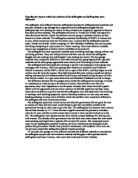The campaign for women’s suffrage was formally founded by the National Union of Women’s Suffrage Societies (NUWSS), in 1897. These women worked hard for women’s votes but were largely unsuccessful with their method of campaign. In 1903, women broke away from the NUWSS and took matters into their own hands, using entirely different forms of protest.
The NUWSS’s aim was for ‘votes for women’, but this did not necessarily include all women. This campaign aimed to place women level with men, who already had the vote. The movement took place in major cities, which meant women could support the campaign, no matter where they lived. The suffragists believed in constitutional peaceful campaigning such as; issuing leaflets, presenting petitions, arguing cases with MP's in an orderly manner and other methods. Middle class women with good connections made use of these and found ways to contact politicians through their husbands and family members. However, a lot of effort was being made with little progress. The campaign received some support from men, including John Stuart Mill, the MP for Westminster. He raised the issue of women’s votes in Parliament, but was often laughed at. It is important to note that a small number of men supported the NUWSS and played a small but important part in the campaign. The suffragists received promises of support from MPs, but little was actually done. Many other organisations were set up to work alongside the NUWSS to gain women’s votes.







